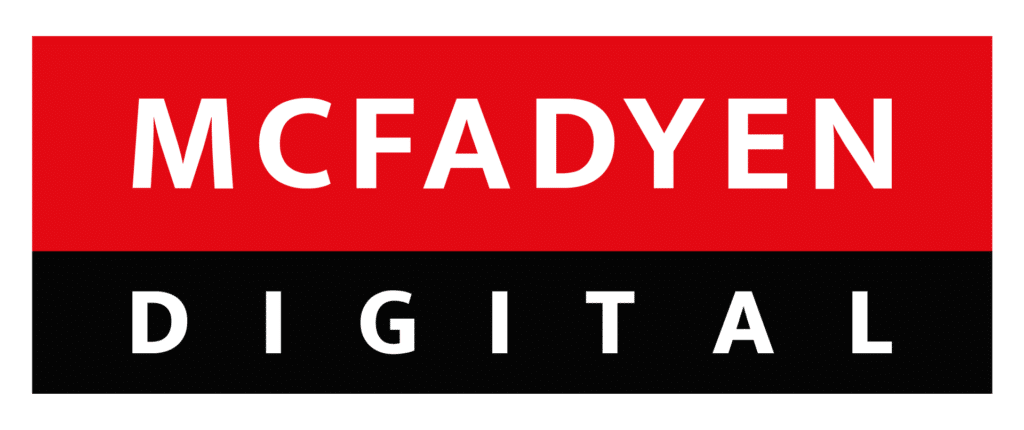
Seven promotional go-to-market activities that drive traffic
 “If you build it, they will come”, was a winning strategy for Kevin Costner in the iconic movie “Field of Dreams”, but it doesn’t hold true when applied to a new Ecommerce or online marketplace property. All of the market research, UX planning, UI design, best-of-breed technology, and killer product offerings mean nothing if your buyers aren’t being engaged and directed to the site.
“If you build it, they will come”, was a winning strategy for Kevin Costner in the iconic movie “Field of Dreams”, but it doesn’t hold true when applied to a new Ecommerce or online marketplace property. All of the market research, UX planning, UI design, best-of-breed technology, and killer product offerings mean nothing if your buyers aren’t being engaged and directed to the site.
Whether you’re launching a new first-party commerce (1P) property where you’re offering your own items or services, or you’re launching a new online marketplace where you offer your own items alongside those of third-party sellers (3P), you need a comprehensive marketing and promotional plan. The key is engaging your audience in a consistent way across multiple channels with relevant messaging and offers.
The following are seven of the top ways to ensure your new site launch is a success by launching a coordinated, multi-channel promotional effort:
#1) PR and Media Activities
Traditional Public Relations and Media activities such as press releases, media placements in publications (national, regional, industry-specific), interviews, and appearances may be old-school, but they’re also very effective at spreading a message. Aside from the physical distribution channels, the digital aspect of the placements has clear search engine optimization benefits, in addition to the buzz-building effects. This traditional PR effort will vary depending on the size of your organization and the intended audience. As such, publications targeted will range from National-level to industry trade-level. Media interviews and televised appearances may also be appropriate targets for higher-profile, bigger-budget launches.
Use PR and Media early and often to set the tone for your other channels. The messaging should be clear, concise, and present the value of your offering to the intended audience.
This is a tactic that extends from the pre-launch hype stage, through to the innovation and iteration stages of site development.
#2) Organic Social Activities
Social media is firmly in the “must-have” category when it comes to any modern business, but it plays an increasingly important role in the launch of new web properties. While your audience will dictate exactly which social networks you focus your efforts on, the goal is to build excitement for the new property, promote and reinforce the PR and Media activities, and to engage your audience with interactive content such as polls or contests.
Consumer-focused sites will do best to concentrate efforts on Facebook, Instagram, and Twitter, possibly adding the likes of Pinterest and SnapChat, depending on the target audience. Business-focused sites will usually concentrate on LinkedIn, Twitter, and Facebook.
The other aspect of organic social that organizations need to prepare for is social-media-as-a-customer-service-channel inevitability. This is especially true for consumer-focused Ecommerce operators. Social media has become one of the most important customer service functions. Whatever social properties you decide to utilize, it is wise to have both processes and personnel in place empowered with the technology and knowledge to quickly respond to customer inquiries and issues.
This tactic applies to the pre-launch hype phase and should be an ongoing engagement effort through launch and post-launch.
#3) Search Marketing and Paid Social
Paid Search Marketing, especially via Google AdWords, is quite possibly the most important method of driving traffic to a new Ecommerce property with Paid Social Ads and sponsored content growing in importance. Planning an effective AdWords and paid social marketing efforts means having an understanding of the audience you are targeting and setting an aggressive-as-possible budget from launch-time forward.
When starting a new AdWords effort for a new property, you don’t have the benefit of historical data, but you do (should) have a lot of information about the target audience. That information, combined with keyword research using Google’s Keyword Planner, can provide a great staring point. Google offers a new feature called Dynamic AdWords that will automatically match the content on your site with customer’s actual search terms. This is a good way early-on to see exactly how real customer search terms match with your content, just be sure to stay on top of adjusting things like “negative keywords” (keywords that match your content, but you don’t want to spend money on), and creating tightly-focused campaigns based on the keywords that are driving traffic and converting into sales.
Paid Social is still much newer than Google’s AdWords and the various networks have been undergoing rapid iterations and improvements to their targeting capabilities. The most important consideration when advertising or sponsoring content on social networks, is the purpose of each network. Ask yourself, “why is this person on this social network?”, then tailor your message and imagery accordingly. A potential customer is likely to be in “work-mode” when browsing LinkedIn, meaning more business-focused information and content will be relevant, whereas that same person may be more likely to interact with a poll or a contest on Facebook.
Retargeting is the other key aspect of advertising on all of the aforementioned properties. It is possible to start with broader category-based re-targeting ads for those who have visited a category or product page and work your way up to re-targeting individual products, should you not have the bandwidth to go with a detailed effort off the jump. In addition to the product or category based retargeting efforts, an abandoned-cart campaign is also a likely strong-performer early-on.
These tactics apply much closer to the actual launch of the site and should be a primary source of lead investment from launch through ongoing operations and iterations.
#4) Print Advertising
The popularity, metrics, and effective targeting of digital engagement methods have lead many marketing strategists to shy away from print advertising, but it can still serve as a valuable channel for brand-building and lead generation. Print advertising can be utilized in various ways; National publications, regional publications, industry-specific publications, circulars, and direct mail.
The key for success in print advertising, like with the other channels, is to select the publications relevant to the audience, craft visually impactful ads with a succinct message and a clear call to action. If your organization utilizes circulars, they represent an ideal opportunity to promote your new Ecommerce property, especially in conjunction with a one-time offer code that incents your customers to create an online account or place their first order.
Print-specific offer codes and unique URLs are ways to track ROI from print advertising.
Print advertising can be used to build-hype, promote the launch, and continually reinforce the brand value of the site by touting new products, categories, and innovations.
#5) In-Store Promotions
Brick and Mortar retailers stepping into the Ecommerce arena with a new property have the distinct advantage of leveraging their foot-traffic to drive awareness of the new site. These tactics can range from banners, graphics, printing on receipts, ads on shopping carts, end-cap displays, and apparel/pins for the staff.
The key to successful in-store advertising is to make the messaging clear as to what the added-benefit is to the in-store experience. This could mean online-only items, in-store stock information, ordering for delivery, exclusive online promos/coupons/sales, rewards programs, etc. Clearly communicate the benefits and give the audience a call-to-action. Just as with print advertising, unique codes or URLs can help track the ROI of this effort.
In-store promotions can be used lightly to generate hype and should be primarily used for site-launch promotion, then ongoing to announce online promotions, new features, sales, etc.
#6) Email Marketing
The death of email marketing as a means of revenue generation has been greatly exaggerated. Email remains a vital channel for those willing to put in the work to make it work. That work includes knowing your audience and your personas, plotting their journey, then creating relevant messages sent at the right time, making it an important way to reinforce your new site’s benefits while keeping it in your customer’s consciousness.
Email marketing can certainly be used to send sales-focused email messages, but an over-reliance on that tactic is the quickest way to an “unsubscribe” click. The most effective email marketers provide valuable information to their prospects and customers at the time when they need it most. This includes not only “marketing” emails, but transactional emails surrounding key events like a new account sign-up, a first order, a cart abandonment message, a shipping confirmation, etc.
If a marketing team understands their audience and what they care about and understands the major journeys they will embark upon (discovering the site, placing the first order, creating an account, leaving their first review, re-purchasing, winning back an inactive customer, etc.), it is possible to design more meaningful communications that provide value while also making up-sell or cross-sell suggestions. Having a subscription center where your visitors can select what types of communications to receive and how frequently to receive them helps cut down on the number of outright unsubscribes and tells you what certain folks are interested in hearing about.
These email marketing tactics can be used sparingly in the hype stage of the launch, but are most effective at site launch and in continually engaging those who use the site.
#7) Search Engine Optimization
Last, but certainly not least, is Search Engine Optimization (SEO). With Google and Bing, et all, continually changing their indexing algorithms, SEO is part art and part science. What we do know is that the search engine operators are obsessed with relevance and very much against anyone trying to game the system. Initially, focusing on the fundamentals of search optimization is the most important thing. Start simple, then iterate into more complexity.
The foundations include ensuring that your page titles reflect the primary product/category/topic in a clear way, that your URL structure contains the product, category, or topic, that your meta description contains the terms in the page title, that those terms are repeated within a header tag, that you utilize alt-tags for all images and that those alt tags contain the same key words or phrases used within the other meta fields. This consistent use of the same keywords and key phrases helps the search engines gage the level-of-relevancy of your page content, leading to higher organic placements.
The other, perhaps equally important, part of SEO preparation is to think of everything in a mobile-first fashion. Google is leading the charge in ranking sites through the lens of a mobile user, meaning if your site is not truly mobile responsive AND has the other SEO fundamentals handled, that site will not garner a favorable ranking in organic results.
Using Google’s Webmaster Tools and Bing’s Webmaster Tools help with the organic search planning and optimization activities.
These search optimization tactics occur during the site build stage of production, but go into practice once the site is live to the public, then becomes a foundational operational activity of generating traffic to the site.
Conclusion
These seven promotional activities for a new Ecommerce or online marketplace property will help you to drive traffic to your new site while building brand equity with your target audience. Presenting a consistent message and experience across all of these channels will lead to a higher rate of customer engagement and an increased level of revenue generated.
Remember, a great site is only as good as the marketing effort that let’s potential customers know about it. Be sure that your efforts are covering all of the relevant channels.
At McFadyen Digital, we not only develop world-class digital commerce experiences, we help our customers launch them. If you are launching a new Ecommerce or online marketplace property and could us any advice or assistance, please reach out to us at info@mcfadyen.com and we’ll be happy to help.
AUTHOR
Thomas Gaydos
CMO & Marketing Practice Lead
MCFADYEN DIGITAL
@ThomasGaydos
Related Articles
Turn Insight Into Impact.
Start Today.




